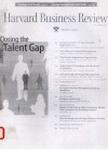版权所有:内蒙古大学图书馆 技术提供:维普资讯• 智图
内蒙古自治区呼和浩特市赛罕区大学西街235号 邮编: 010021

作者机构:Stanford Univ Stanford CA 94305 USA McKinsey & Co Toronto ON Canada
出 版 物:《HARVARD BUSINESS REVIEW》 (Harv Bus Rev)
年 卷 期:1999年第77卷第3期
页 面:72-+页
核心收录:
学科分类:0202[经济学-应用经济学] 02[经济学] 1202[管理学-工商管理] 1201[管理学-管理科学与工程(可授管理学、工学学位)]
主 题:商业/经济学 商业/组织和管理 经济竞争 卫生服务使用研究/组织和管理 组织文化 组织改革 规划技术 生产线管理 美国
摘 要:In turbulent markets;businesses and opportunities are constantly falling out of alignment;New technologies and emerging markets create fresh opportunities: Converging markets produce more. And of course,some markets fade. In this-landscape of continuous flux, it s more important to build corporate-level strategic processes that enable, dynamic repositioning than it is to build any particular defensible position. That s why smart corporate. strategists use patching, a process of mapping and remapping business units to create a shifting mix of highly focused, tightly aligned businesses:that can respond to changing market opportunities;:Patching is not just another name for: reorganizing;patchers have a distinctive mind-set. Traditional managers: see structure as stable;patching managers believe structure is inherently temporary. Traditional managers set corporate strategy first, but patching managers keep the organization focused on the right set of business opportunities and let strategy emerge from individual businesses. Although the focus of patching is flexibility, the process itself follows a pattern. Patching changes are usually small in scale and made frequently. Patching should be done quickly;the emphasis is on getting the patch about right and fixing problems later. Patches should have a test drive before they re formalized but then be tightly scripted after they ve been announced. And patching won t work without the right infrastructure: modular business units, fine-grained and complete unit-level metrics, and companywide compensation parity. The authors,illustrate how patching works and-point out some common stumbling blocks.